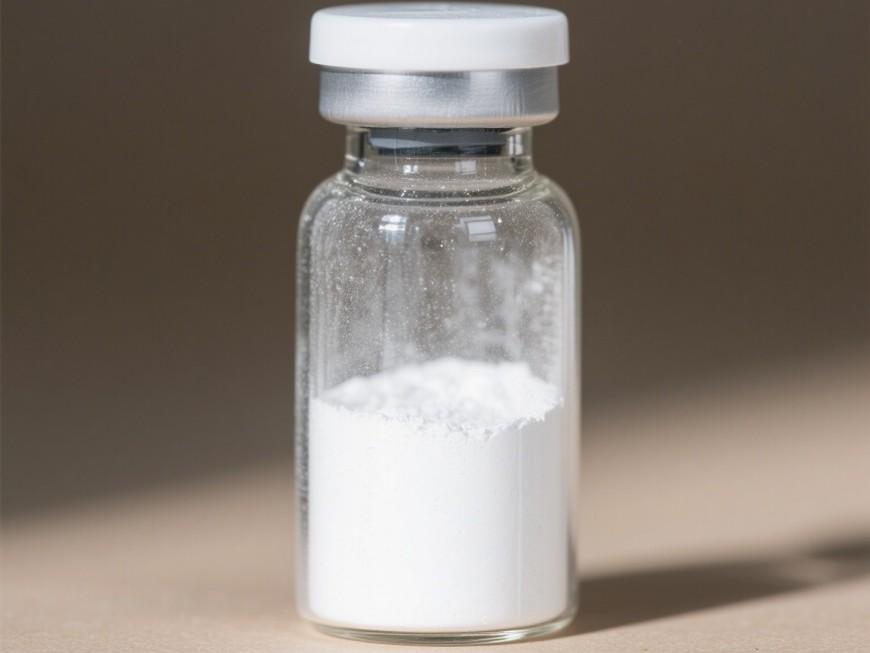What Are the Uses of Hyaluronic Acid Powder in the Food Field?
As people's health-conscious consumption patterns continue to evolve, how to eat for health and beauty has become a key focus for consumers. As a result, the Chinese market has seen the emergence of a range of new resource foods that are beneficial to health or possess specific functional properties. New resource foods refer to food ingredients that are newly developed, discovered, or introduced in China, have no established edible habits, and meet basic food safety requirements. Hyaluronic acid (hyaluronan) is a new member of this family. This article reviews the oral absorption mechanisms and health benefits of hyaluronic acid, introduces related oral hyaluronic acid products from various countries, and provides support for the development of hyaluronic acid in the food industry.
1 Introduction to Oral Hyaluronic Acid
Hyaluronic acid is a linear, high-molecular-weight acidic mucopolysaccharide composed of alternating units of D-glucuronic acid (GlcA) and N-acetylglucosamine (GlcNAc). Commercially available hyaluronic acid is typically its sodium salt, i.e., sodium hyaluronate. Hyaluronic acid is widely distributed in biological organisms, with high concentrations in joint cavities, skin, eye vitreous humour, cartilage, umbilical cord, and rooster combs [1]. In 1934, Meyer et al. from the United States first isolated this substance from the vitreous humour of cow eyes. Hyaluronic acid possesses unique functions such as skin moisturisation, nutrition, anti-aging, antibacterial and anti-inflammatory properties, wound healing promotion, joint function improvement, and drug delivery. It is a versatile and high-performance functional biochemical substance widely used in cosmetics, pharmaceuticals, biochemistry, and health foods.
Early hyaluronic acid was primarily extracted from human umbilical cords and chicken combs; however, limited raw material sources restricted production scale. With the continuous maturation of fermentation-based hyaluronic acid production technology, hyaluronic acid production has undergone a series of transformations from raw materials to technology, and hyaluronic acid has gradually evolved from an expensive ‘rare substance’ into a functional ingredient widely recognised by consumers.

As a natural component of living organisms, hyaluronic acid, though present in only 15 g in the normal human body, plays a crucial role in maintaining normal bodily functions and delaying aging. Hyaluronic acid content is highest during the embryonic stage, reaching 20 times that of adult tissues, and decreases gradually with age. If the relative hyaluronic acid content in the human body at age 20 is set at 100%, it decreases to 65%, 45%, and 25% by ages 30, 50, and 60, respectively. Hyaluronic acid levels also vary among individuals of the same age, with those suffering from premature aging showing significantly lower levels and exhibiting various signs of aging [2]. The conversion rate of hyaluronic acid in mammals is extremely high. A decrease in hyaluronic acid can lead to various issues such as arthritis, skin aging, increased wrinkles, and presbyopia [3]. Therefore, the level of hyaluronic acid in the body can be regarded as a measure of the degree of human aging. Currently, it is believed that oral supplementation of hyaluronic acid to replenish endogenous hyaluronic acid is an effective approach for beauty, health, and longevity.
In China, the primary application areas of hyaluronic acid are concentrated in the pharmaceutical, clinical diagnosis and treatment, and cosmetics industries, accounting for over 98% of total usage [4]. Its application in food is still in its infancy, with limited reports available. Research on the use of hyaluronic acid in food first emerged in Japan, where official institutions have affirmed the safety of both extraction and fermentation methods for producing hyaluronic acid. Animal experiments have shown that hyaluronic acid is non-antigenic, and potential allergic reactions to hyaluronic acid in the human body are negative [5]. Acute toxicity experiments on rats indicated that oral administration of 500 mg/kg body weight of hyaluronic acid showed no antigenicity, no allergic reactions, and no teratogenic, mutagenic, or carcinogenic effects [6]. Oral experiments have shown that hyaluronic acid is practically non-toxic [7]. Since hyaluronic acid is a natural component of the human body and hyaluronic acid produced by different processes has no species differences, oral administration of hyaluronic acid has a high safety profile.
In the late 1980s, oral hyaluronic acid beauty and health supplements first appeared in Japan. The theoretical basis is that after oral administration, hyaluronic acid is digested and absorbed, increasing the precursors for hyaluronic acid synthesis in the body, thereby raising hyaluronic acid levels and concentrating them in skin tissue. This enhances the skin's moisture-retaining capacity, softens the skin's keratin layer, and improves skin elasticity while reducing wrinkles [8-9]. Unlike cosmetics containing hyaluronic acid, which only act on the skin's surface to provide local moisturisation, oral hyaluronic acid works through the degradation, absorption, and re-synthesis of exogenous hyaluronic acid in the body, thereby increasing endogenous hyaluronic acid levels and achieving overall beauty and health benefits.
2 Absorption Mechanism of Oral Hyaluronic Acid
To date, through subcutaneous, intramuscular, or intravenous administration, the local metabolism of hyaluronic acid in various tissues except the brain has been basically understood. However, due to the presence of endogenous hyaluronic acid, accurately measuring the absorption of exogenous hyaluronic acid is challenging, so pharmacokinetic studies on oral hyaluronic acid are still insufficient.
Jiang Qiuyan et al. [10] conducted an oral hyaluronic acid experiment in rats via gastric lavage, with a dose of 60 mg/kg body weight and a hyaluronic acid concentration of 0.6%. The experimental results showed a biphasic drug-time curve: a significant peak appeared approximately 2 hours after administration, followed by a decline in concentration between 2 and 4 hours, and a steady increase between 4 and 13 hours. This phenomenon was explained as follows: the peak at approximately 2 hours was primarily due to the absorption of exogenous hyaluronic acid in a non-monosaccharide form by the body, while the peak after 4 hours was attributed to the degradation of exogenous hyaluronic acid into two monosaccharides, followed by their resynthesis within the body. After continuous oral administration of hyaluronic acid for 7 days and 30 days in rats, serum hyaluronic acid concentrations were measured. Compared with the control group, the free hyaluronic acid content in the skin was significantly increased after 30 days of continuous oral administration, indicating that hyaluronic acid can be concentrated in tissues with high hyaluronic acid content after oral administration and participate in the metabolism of hyaluronic acid in these tissues. Further animal experiments showed that after 30 days of oral administration of hyaluronic acid, the hyaluronic acid content in joint synovial fluid and skin was significantly increased in rats.
Lajos et al. [11] labelled hyaluronic acid with radioactive technetium and investigated its metabolism in Wistar rats and Beagle dogs. After 72 hours, the radioactivity in rat excreta decreased to 5%, with detectable radioactivity in blood, muscle, thyroid, and bone. Peak radioactivity was observed 4–6 hours after oral administration, and both rats and dogs showed radioactivity in shoulder joint and spinal fluid 4 hours post-administration. These findings indicate that hyaluronic acid is absorbed by the body and distributed to organs and joints after oral administration.
The absorption, metabolism, and resynthesis of hyaluronic acid are complex biochemical processes, particularly the absorption process. Hyaluronic acid is a linear, straight-chain macromolecule, so its absorption mechanism cannot be explained using the conventional biochemical principles governing the absorption of spherical molecules. It is generally believed that the human body can only absorb macromolecules with a molecular weight (Mr) of approximately 10,000. However, for the absorption of polysaccharides, additional factors such as the spatial conformation of the substance, its water solubility, and whether it is easily hydrolysed in the intestine must also be considered. For hyaluronic acid, its excellent water solubility and linear molecular structure, which facilitates absorption, make its absorption in the human body possible. Animal experiments have confirmed this through oral absorption data in the stomach; the results indicate that absorption efficiency is correlated with the Mr of the administered dose, suggesting that hyaluronic acid may also be absorbed in non-monosaccharide forms after oral administration. Additionally, the absorption of hyaluronic acid in the body is also related to the final formulation of the food product. Since hyaluronic acid is a large molecular polymer, its disintegration and dissolution processes in the human body also influence its bioavailability.
3 Research on the efficacy of oral hyaluronic acid
3.1 Beauty and health benefits
The dermis of the human body is primarily composed of collagen. Skin aging is caused by changes in collagen, which are attributed to a reduction in hyaluronic acid, a component with hydrating properties. The content of hyaluronic acid in the human body is in a dynamic equilibrium process. In a healthy individual, there are both degradation and synthesis reactions of hyaluronic acid. As age increases, this dynamic equilibrium is gradually disrupted, leading to a decrease in hyaluronic acid content and the gradual appearance of aging signs. Therefore, oral supplementation of exogenous hyaluronic acid to increase its synthesis in the body has become a key strategy for delaying aging.
Pang Xiaoyang et al. [12] conducted human efficacy trials using a skin-moisturising and beauty product formulated with chicken comb extract and other ingredients. The product was administered once daily at a dose of 4 capsules for 30 days. Compared with their own baseline and the control group, the skin moisture levels of the test subjects were significantly improved. Yamamoto [8] conducted a human clinical study showing that after taking hyaluronic acid products (ECM-E) for 3–24 days, most test subjects had smoother and more moisturised skin, with aesthetic effects observed on the face and throughout the body.
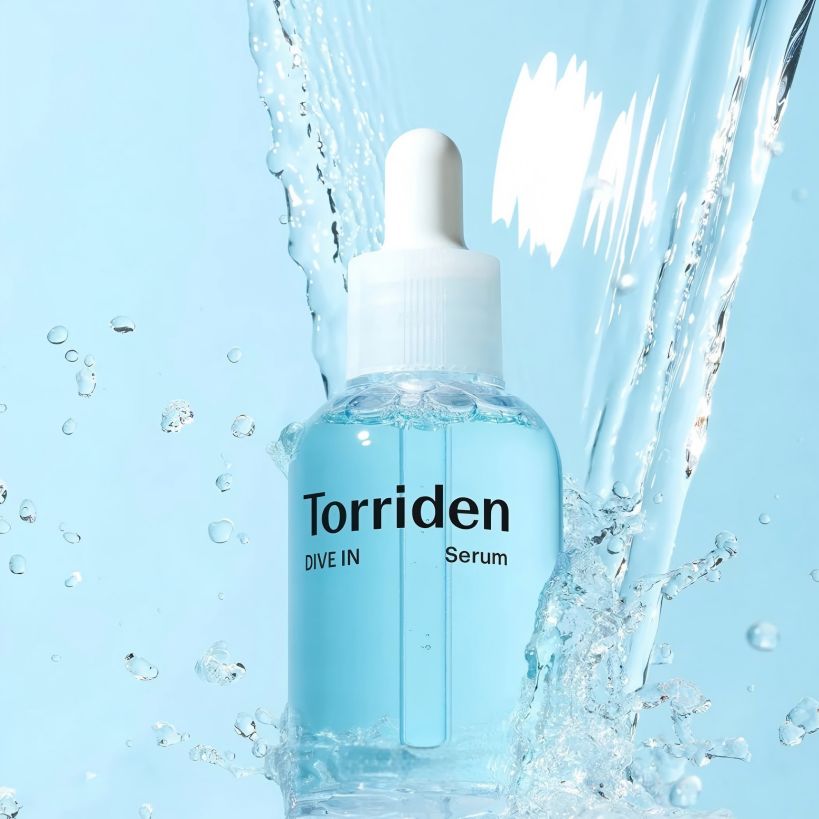
Huaxi Furuida Biotechnology Co., Ltd. conducted a human functional trial to improve skin moisture. The trial group and control group each consisted of 52 participants, who were administered hyaluronic acid capsules (20 mg per capsule) and placebo, respectively, twice daily at 3 capsules per dose, for 45 consecutive days. The results showed that skin moisture levels in the trial group significantly increased after the trial, with significant differences compared to pre-trial levels and significant differences compared to the control group. After taking hyaluronic acid capsules, all test indicators were within normal ranges, and no allergic reactions or other adverse effects were observed, confirming the safety and efficacy of this product.
3.2 Improvement of Joint Function and Osteoporosis
Japanese Q.P. Company [13] conducted a double-blind trial with 37 volunteers aged over 40 years old in the United States, using a placebo as the control group. Participants were administered 200 mg of high-purity hyaluronic acid daily, for 8 weeks. Joint pain changes were evaluated using the Western Ontario and Ontario Osteoarthritis Index (WOMAC) score. The results indicated that hyaluronic acid effectively alleviated joint pain. Leneau et al. [14] also conducted related experiments, confirming that oral hyaluronic acid effectively alleviates arthritis symptoms and protects joint function.
Osteoporosis is the result of a long-term disruption of the balance between bone resorption and bone deposition. Stancikova et al. [15] studied the effects of oral administration of two Mr (1.62 × 10⁶ and 0.75 × 10⁶) and three doses (150, 500, 1000 μg/kg body weight) of hyaluronic acid on an ovariectomised osteoporosis animal model, After four weeks of continuous oral administration, all three high-Mr dose groups and the high-dose low-Mr group reduced the levels of bone resorption markers pyridinoline and deoxypyridinol in urine to normal levels, increased bone density, and the efficacy was dependent on the Mr and dose of orally administered hyaluronic acid.
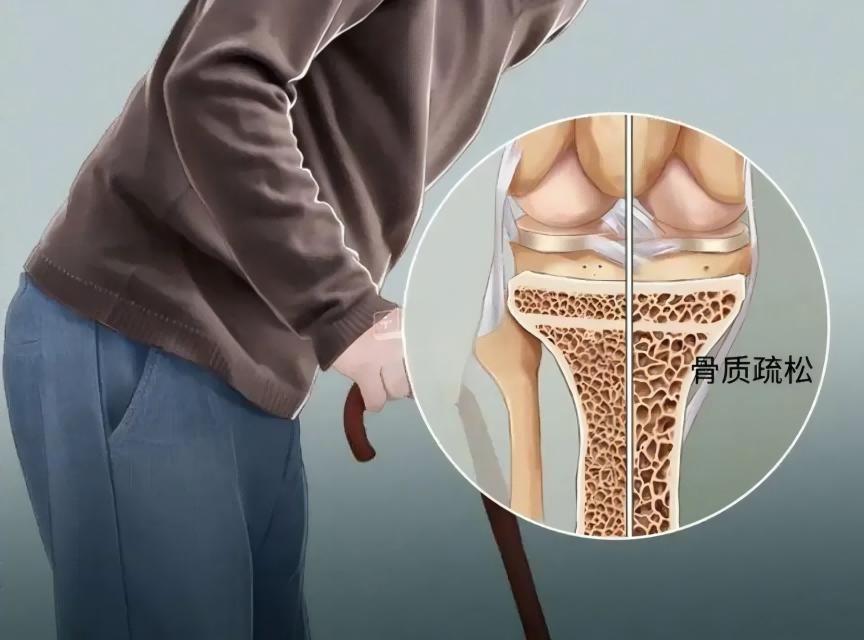
3.3 Repair of gastric mucosal damage
Huaxi Furuida Biotechnology Co., Ltd. investigated the effects of oral hyaluronic acid on chronic gastric ulcers using a rat gastric injury animal model. The hyaluronic acid dose was 45 mg/kg, with potassium citrate bismuth (BPC) as the positive control at 45 mg/kg, and physiological saline (NS) as the negative control at 10 mg/kg. Ulcer area changes were measured as the ulcer index. After 5 days of administration, there was no significant difference in ulcer area between the hyaluronic acid group and the BPC group compared to the NS control group. After 10 days of administration, the ulcer areas in the BPC and hyaluronic acid groups were smaller than those in the NS control group (P < 0.05), indicating that hyaluronic acid promotes ulcer healing with effects similar to those of BPC, suggesting that hyaluronic acid has a protective effect on the gastric mucosa and can repair damaged gastric mucosa.
3.4 Other effects
With the increasing complexity and diversity of human health issues, research on the effects of oral hyaluronic acid has extended to many related fields, including promoting wound healing [16], improving cardiovascular function [17], alleviating symptoms of osteoarthritis [18], enhancing immune function [19], and promoting angiogenesis [20], all of which have yielded satisfactory results.
4 Market Analysis of Foods Containing Hyaluronic Acid
The Japanese Ministry of Health, Labour and Welfare conducted a safety assessment of 489 food additives, including hyaluronic acid, and included hyaluronic acid in its list of food additives. In 2009, the Japanese Health and Nutrition Food Association established industry standards for hyaluronic acid in foods, affirming its safety for consumption. South Korea has approved hyaluronic acid as a food additive for use in food manufacturing. The United States, China, the United Kingdom, Canada, the Czech Republic, and other countries have also launched multiple hyaluronic acid-containing food products, indicating that hyaluronic acid as a food ingredient has been recognised in multiple countries.
4.1 Japan
Currently, hyaluronic acid-containing food products in Japan are categorised into two types: health functional foods (health foods) and general foods. A brief introduction to some products is provided below.
4.1.1 Health Functional Foods (Health Foods)
MAX Hyaluronic Acid produced by Beauty and Health Co., Ltd. contains water-soluble collagen protein and hyaluronic acid as its active ingredients, primarily used for hydration and enhancing skin elasticity. Collagen Oral Solution developed and produced by Shiseido contains small-molecule fish collagen protein and hyaluronic acid as its main components. Qusai Co., Ltd. produces a powder that can be added to beverages—Hyaluronic Acid Collagen Protein—whose main components are collagen protein, hyaluronic acid, and chondroitin sulfate-containing mucopolysaccharide proteins. Two health foods under the Japanese DHC brand primarily contain hyaluronic acid and fish collagen protein, accounting for the top two sales positions among the brand's health foods. Additionally, its weight-loss health foods also contain hyaluronic acid.
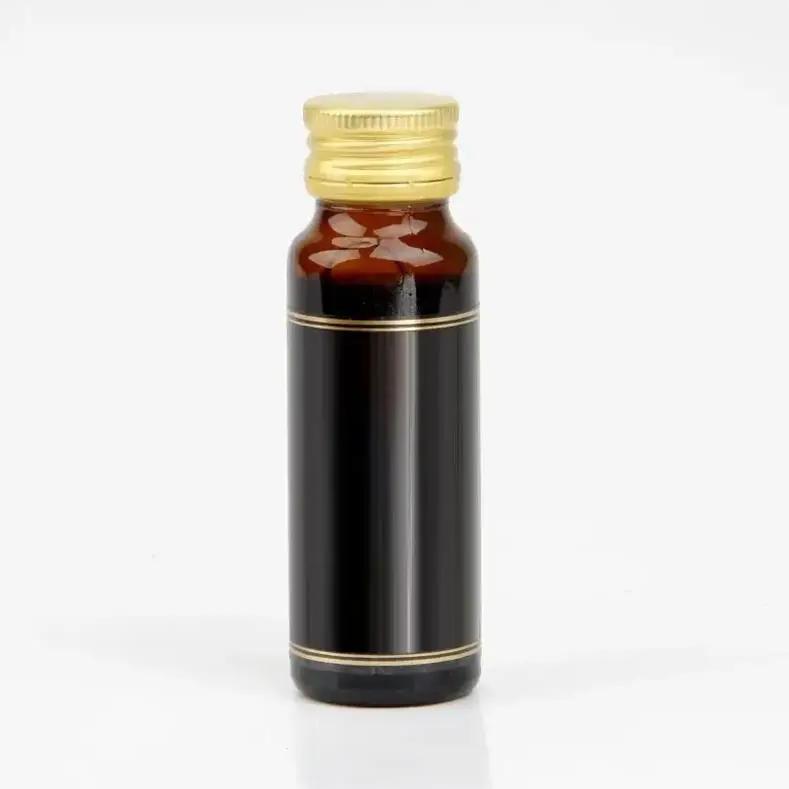
4.1.2 General Foods
Japan also offers a variety of general foods containing hyaluronic acid, including beverages, yogurt, chewing gum, jam, jelly, salad dressing, tea powder, egg soup mix, honey, soft candy, noodles, and green tea. A jelly-like sports nutrition product with collagen and hyaluronic acid as its active ingredients is primarily used to replenish nutrients lost from the skin over time and is widely available in supermarkets. Additionally, Meiji Seika Co., Ltd. produces a hyaluronic acid-containing jelly.
Japan New Drug Co., Ltd. has launched a bottled beverage containing hyaluronic acid, with main ingredients including hyaluronic acid, fruit juice, acidity regulators, and cherry plum; Japan Mandai Fermentation Co., Ltd. has introduced a bottled beverage containing hyaluronic acid, with main ingredients including hyaluronic acid, fruit juice, water-soluble collagen protein, plant fermentation extracts, coenzyme Q10, and vitamin B; DyDo Co., Ltd. has launched a hyaluronic acid-containing beverage, with main ingredients including hyaluronic acid, collagen, and ceramides. Kracie Food Co., Ltd. has introduced several hyaluronic acid-containing chewing gums and soft candies. Kikkoman Co., Ltd. has launched hyaluronic acid-containing jams and salad dressings. Aoi Seicha Co., Ltd. also produces green tea containing hyaluronic acid.
4.2 United States
In the United States, hyaluronic acid-containing foods are primarily dietary supplements, with their main functions focused on improving skin and joint health. Nutritional Specialties produces Life Time capsules, which contain 140 mg of hyaluronic acid and are primarily used to maintain hydration and lubricate joints. Nutraceutical International produces Solaray capsules, whose main ingredients include 20 mg of hyaluronic acid, 50 mg of vitamin C, as well as cellulose, triethylglycol, silica, and magnesium stearate. Purity Products' Vital-Hyaluronic Acid Softgels contain 50 mg of hyaluronic acid, along with vitamins A, C, E, B6, B12, collagen protein, coenzyme Q10, eicosapentaenoic acid (EPA), Docosahexaenoic Acid (DHA), and other substances; Purity's Ultimate H.A. Formula capsules contain hyaluronic acid and chondroitin sulfate, among other ingredients.
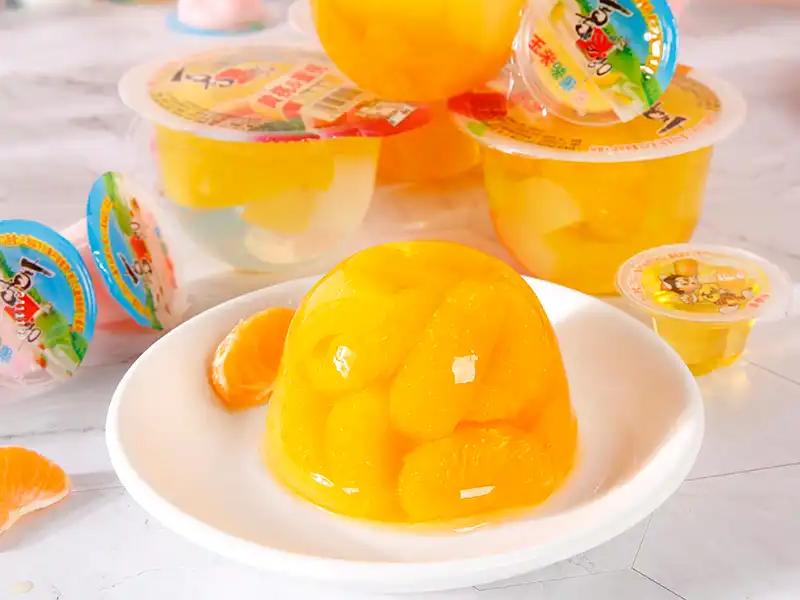
NBTY's Doctor's Trust Hyaluronic Acid Capsules contain hyaluronic acid 50 mg as the main ingredient, along with calcium hydrogen phosphate anhydrous, magnesium phosphate, stearic acid, magnesium stearate, and silica. California Natural's Hyaluronic Acid Formula contains 500 mg of type II collagen, hyaluronic acid 50 mg, and chondroitin sulfate 100 mg. Source Naturals' Hyaluronic Acid (tablets) contains hyaluronic acid, chondroitin sulfate, and type II collagen. NeoCell's Deep Sea Fish Collagen Protein + Hyaluronic Acid Capsules are primarily used for skin anti-wrinkle and moisturising purposes and are widely popular among consumers.
4.3 China
In May 2008, the National Health Ministry issued an announcement in accordance with the ‘Administrative Measures for the Management of New Resource Foods,’ approving sodium hyaluronate as a new resource food ingredient for use in health foods. This announcement will promote the application of hyaluronic acid in China's health food sector. Currently, hyaluronic acid-containing foods in China are primarily health foods, with the main efficacy being to improve skin hydration. Due to its relatively short history as a food ingredient, the variety of hyaluronic acid-containing foods available in China is limited.
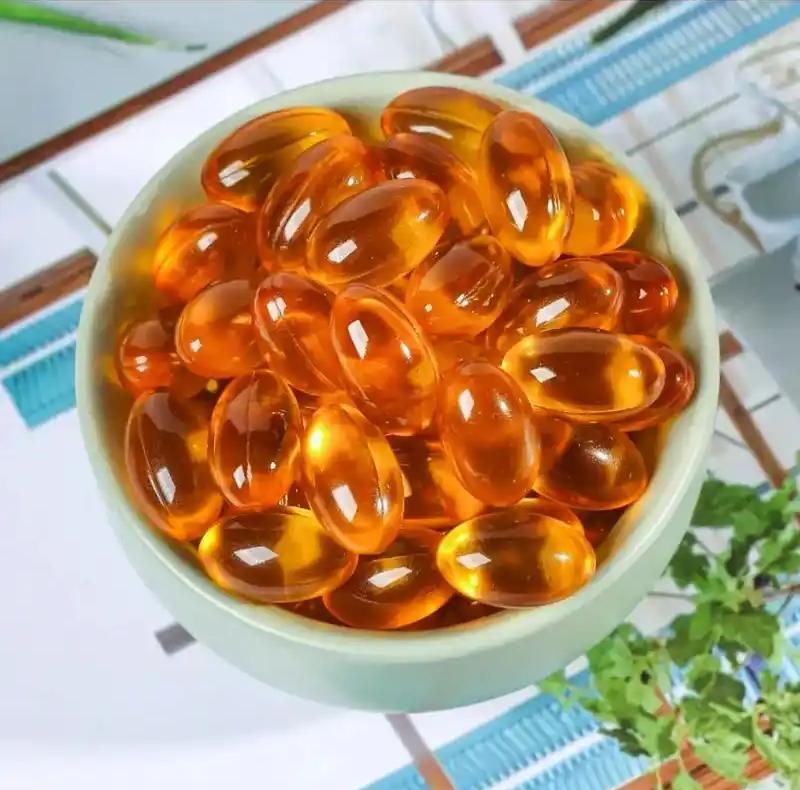
In 2012, Beijing Tongrentang Health Pharmaceutical Co., Ltd.'s “Tongrentang Brand Hyaluronic Acid Marine Fish Collagen Peptide Powder (Apple Flavour, Orange Flavour)” was approved for registration by the China Food and Drug Administration, primarily for improving skin moisture and antioxidant properties.
In the same year, Shanghai Jinhao Health Food Co., Ltd.'s “Shann'er Brand Collagen Protein Hyaluronic Acid Vitamin C Powder” was also approved, with its primary function being to improve skin hydration.
4.4 Other Countries
In South Korea, Lotte Company launched beverages containing hyaluronic acid and V12 vitamin water; Nanyang Industrial Company launched tea beverages containing hyaluronic acid. In Canada, Health & Beauty Company; in the United Kingdom, Higher Nature Company; and in the Czech Republic, Nutrend Company launched powdered supplements containing hyaluronic acid. In Malaysia, I-deal Company launched beauty beverages containing hyaluronic acid.
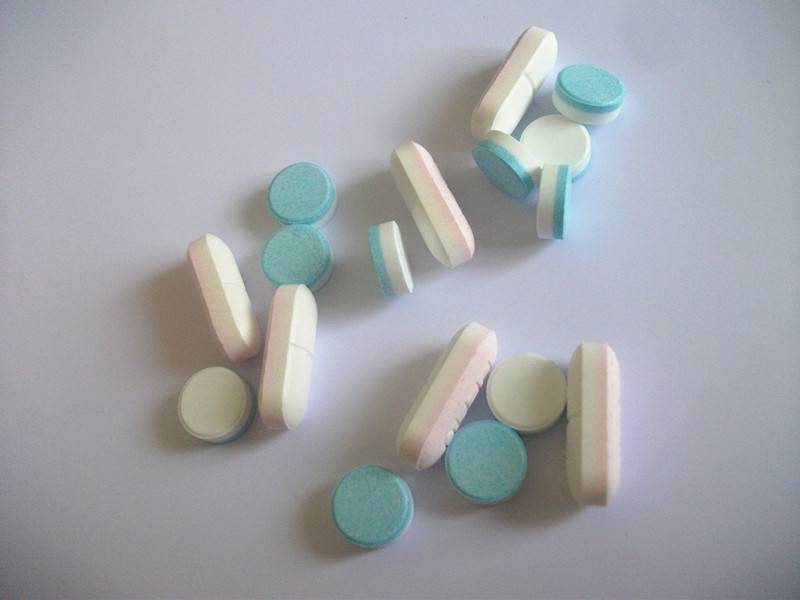
It is evident that the use of hyaluronic acid in health supplements (health foods) and general foods is already widespread in countries such as Japan, the United States, and South Korea, and has been widely accepted by consumers.
4.5 Formulations of Hyaluronic Acid Health Supplements
4.5.1 Tablets
Tablets are the earliest dosage form for hyaluronic acid health supplements. During production, they typically include other nutrients and excipients such as collagen, elastin, vitamin C, and crystalline cellulose. This dosage form is commonly found in products from Japan and the United States, typically targeting beauty, nutrition, and anti-aging functions.
4.5.2 Capsules
Currently, capsules are the most common dosage form for hyaluronic acid health supplements available on the market. They are often combined with nutrients such as collagen, vitamins, chondroitin sulfate, and plant extracts. Soft capsules are generally more expensive, with the capsule containing a mixture of oily liquids, often including fat-soluble vitamins, lecithin, EPA, and hyaluronic acid, among other nutrients. Hyaluronic acid exists in a suspension state within the capsule. Products in this formulation are primarily targeted at beauty, nutrition, and anti-ageing health benefits.
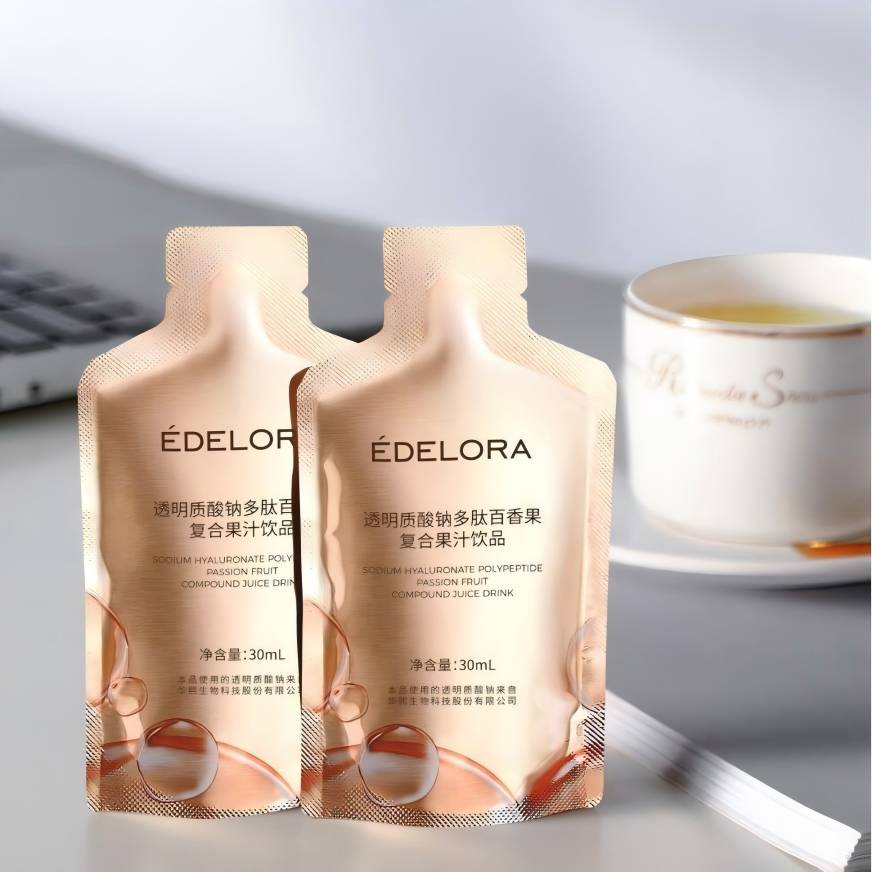
4.5.3 Oral Liquids
Oral liquid formulations containing hyaluronic acid are recently introduced products. Since hyaluronic acid exists in a dissolved state, it is absorbed and metabolised more quickly after ingestion. It is worth noting that such products are typically positioned overseas for health benefits related to joint health, such as ‘Syno-Vital H2O’ and ‘Synthovial 7.’
4.5.4 Powdered Formulations
Another recent trend is oral powder formulations containing hyaluronic acid, which are characterised by easy solubility and absorption. The oral efficacy of these products is often positioned for beauty and health, such as skin hydration, with examples including ‘Tong Ren Tang Hyaluronic Acid Marine Fish Collagen Peptide Powder,’ which has been approved for sale in China.
5 Oligomeric Hyaluronic Acid
Since the activity of hyaluronic acid is related to its molecular weight (Mr), hyaluronic acids with different Mr values may exhibit completely opposite activities. Therefore, countries worldwide have begun to focus on the degradation and degradation products of hyaluronic acid, and have intensified research and development efforts on low-molecular-weight hyaluronic acid and oligomeric hyaluronic acid (Oligo-hyaluronic acid). In particular, Oligo-hyaluronic acid is a fragment of hyaluronic acid molecules with a Mr below 10,000 and a monosaccharide residue count of 2–40 (typically 4–16). Its properties differ significantly from those of ordinary hyaluronic acid [21]. Due to its smaller Mr, Oligo-hyaluronic acid exhibits faster dissolution rates and better bioavailability.
When hyaluronic acid is hydrolysed into smaller fragments, it is more easily absorbed in the intestines. After absorption, it is re-synthesised into hyaluronic acid at specific sites under the action of endogenous enzymes. Japan New Drug Co., Ltd. studied the oral efficacy of Oligo-hyaluronic acid with Mr 3000. Participants were administered hyaluronic acid with Mr 3000, 1.2×10⁴, 10×10⁴, 40×10⁴, and 100×10⁴ orally for 4 weeks, with daily doses of 50 mg and 100 mg. The results showed that the skin moisture content of the oral Oligo-hyaluronic acid group was significantly higher than that of other groups, and the subjects' skin fine lines were reduced, with enhanced skin firmness, with the 100 mg dose group showing more pronounced effects. Therefore, the researchers concluded that, using a daily intake of 120–240 mg of high-molecular-weight hyaluronic acid as an example, due to the better small intestinal mucosal permeability and higher absorption and utilisation of Oligo-hyaluronic acid, the daily intake can be reduced to 50–100 mg.
6 Outlook
Currently, the variety and sales volume of health supplements containing hyaluronic acid are growing rapidly in both domestic and international markets. It is worth noting that currently available health supplements containing hyaluronic acid are primarily targeted at beauty, nutrition, and joint health. As research into the efficacy of oral hyaluronic acid continues to deepen, more new products with different functionalities are expected to emerge.
References
[1] Laurent T C, Fraser J R. Hyaluronan[J]. FASEB J, 1992, 6(7):2397-2404.
[2] Guo Xueping, He Yanli, Sun Maoli, et al. Application of hyaluronic acid in health supplements [J]. Chinese Journal of Biochemical Drugs, 2002, 23(1): 49-51.
[3] Jiang Qiuyan, Ling Peixue, Zhang Tianmin. Research progress on oral administration of hyaluronic acid [J]. Chinese Journal of Pharmacy, 2006, 41(10): 729-731.
[4] Guo Xueping, Liu Aihua, Ling Peixue. Application of hyaluronic acid in cosmetics, health foods, and soft tissue fillers [J]. Food and Drug, 2005, 7(1A): 20-23.
[5] Cui Li. Hyaluronic Acid [J]. Journal of Daily Chemical Products Science, 1999, (5): 28.
[6] Du Pingzhong. Skin Health Benefits of Hyaluronic Acid [J]. Chinese Journal of Biochemical Drugs, 1998, 19(5): 283-284.
[7] Shandong Provincial Health and Epidemic Prevention Station. Acute Oral Toxicity Test of Hyaluronic Acid HA (Topical Grade) Sample [Z]//Inspection Report (Lu Fang Jian Zi 2001D111), 2001: l-6.
[8] Yamamoto H. Anti-aging and Cosmetic Effects of Dietary Hyaluronic Acid (Extracellular Matrix Extract) [J]. New Food Industry, 1998, 40(11): 33-41.
[9] Jiang Qiuyan, Ling Peixue, Cheng Yanan, et al. Distribution of oral hyaluronic acid in animal bodies [J]. Chinese Journal of Biochemical Pharmacy, 2008, 29(2): 73-76.
[10] Jiang Qiuyan, Ling Peixue, Huang Siling, et al. Study on the absorption mechanism of oral hyaluronic acid in rats [J]. Chinese Journal of Pharmacy, 2005, 40(23): 1811-1813.
[11]Lajos B, Andras P, Domokos M, et al. Absorption, uptake and tissue affinity of high- molecular-weight hyaluronan after oral administration in rats and dogs[J]. Agric Food Chem, 2008, 56: 10582-10593.
[12] Pang Xiaoyang, Wang Lijie, Zhang Hui, et al. Clinical study of beauty capsules [J]. Food and Medicine, 2005, 7(6A): 30-31.
[13] Sato T, Iwaso H. An effectiveness study of hyaluronic acid [Hyabest®(J)] in the treatment of osteoarthritis of the knee on the patients in the United States[J]. J New Rem Clin, 2009, 58(3): 551-558.
[14] Leneau H. Ingestion of hyaluronic acid for improved joint function and health: US, 6607745[P]. 2003-08-19.
[15]Stancíková M, Svík K, Istok R, et al. The effects of hyaluronan on bone resorption and bone mineral density in a rat model of estrogen deficiency-induced osteopenia[J]. Int J Tissue React, 2004, 26(1-2): 9-16.
[16] Ling Peixue, He Yanli, Li Xiaoping. Preparation and application of oral hyaluronic acid skin care health products: CN, 99112374.3[P], 2001-02-28.
[17] Turley E A, Asculai S S. Oral administration of effective amounts of forms of hyaluronic acid: WO, 9725051[P], 1997-07-17.
[18] Martinez-Puig D, Carmona J U, Arguelles D, et al. Oral hyaluronic acid administration improves osteochondrosis clinical symptoms and slightly increases intra-articular concentration of hyaluronic acid in a horse model: a pilot survey[J]. Osteoarthritis Cartilage, 2007, 15: 62-63.
[19] Zhang Xiaosong. Application of hyaluronic acid in enhancing human immunity and alleviating symptoms of immune deficiency: CN, 1498626A[P], 2002-11-14.
[20] Wang Yanhou, Wang Fengshan, Guo Xueping. Promoting vascularisation by low molecular weight hyaluronic acid [J]. Chinese Journal of Pharmacy, 2007, 42(9): 664-666.
[21] Cui Xiangzhen, Wang Fengshan, Liu Aihua, et al. Research Progress on Low Molecular Weight and Oligomeric Hyaluronic Acid [J]. Food and Medicine, 2006, 8(3A): 6-9.


 English
English French
French Spanish
Spanish Russian
Russian Korean
Korean Japanese
Japanese